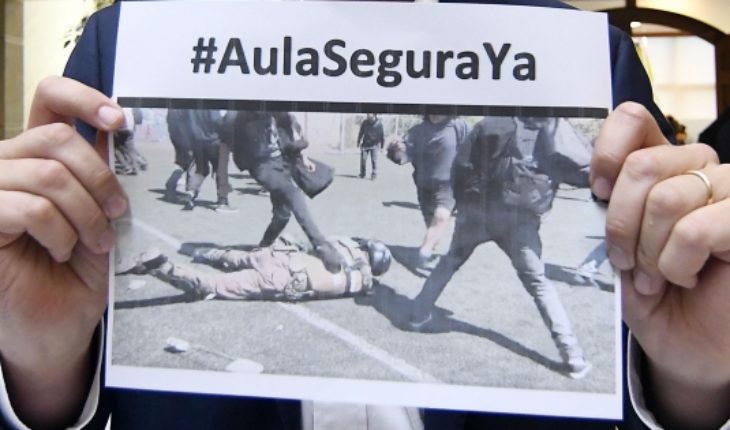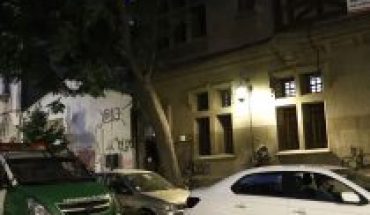in 1975 Michel Foucault said the following : “What is making it tolerable to the presence of the police, the police control a population if it is not the fear of the offender? (…) This institution so recent and so heavy police does not justify more than this. If we accept among us to these people in uniform, armed, while we do not have the right to be, which ask us for our papers, which are around in front of our door, how would this possible if there were no criminals? And should not go out daily articles in newspapers that tells that many are criminals and dangerous? “.”
Much has been written about media strategy used by the Government in the framework of the Bill “Safe classroom” (videos of students hitting police) and it is not our intention to continue to do so. We would like to show here is that these types of projects have little to do with students pounding police: these are inserted within a Government logic that, starting from the identification of specific sectors and social actors as “dangerous” subjects, enables a number of State interventions (public policy, public order forces, etc) which are aimed at social control over certain sectors of the population.
The construction of the “criminal disguised as a student” fits within a hegemonic discourse of the (in) security that defines the social dangers mainly from attacks against property private – street crime mainly-, a series of incivilidades in public space – consumption of alcohol and drugs- and of different social movements – student, environmental, labor, etc.-, settling in the symbolic imagination the idea that this is a “crime”, leaving aside the violations of human rights, offences linked to the economic power, gender-based violence, organized crime, ecological damage, tax offences and criminal deviations from civilian and military organs of the State.
The construction of “dangerous” subjects is one of the main strategies of social control of modern societies. In the case of “Safe room”, the speech of criminalization of the student movement would vectorize a battery of State interventions in order to contain its social demands through two main procedures: direct repression and the prevention by deterrence. Direct repression of the social movements is well known – the week pass we could see it, for example, with the Nomasafps movement. The novelty of this would be the ability to prevent the activities of the students from the existence of sanctions examples. Already it will not take any alteration of public order to intervene on the students but that it can be deployed full time and efficiently.
As much as the expulsion of students finished being judicializada (and adopted the law expulsions will end up in court and with adverse outcomes for educational establishments) single enactment of the law will meet its goal: allow to the educational authorities lecture students. Modus operandi similar to the law against terrorism that it has shown its incompetence in terms of sentences but successful in its task of criminalizing, intimidate and coerce different movements and social leaders. Because as a tool of social control such laws efficiently meet its mission.
In a worrying as the current time, when the region elected a President with an obscene speech of repression of social movements (“ending all kinds of activism”), must not pay attention to disciplinary strategies and repressive, that even though they do not appear as explicitly, they may find even more efficient and effective.
Poured in this op-ed content is the sole responsibility of the author and do not necessarily reflect the editorial line nor the counter position.





